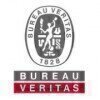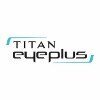Filter interviews by
BIC Cello Design and Product Development Engineer Interview Questions and Answers
BIC Cello Design and Product Development Engineer Interview Experiences
1 interview found
Design and Product Development Engineer Interview Questions & Answers
posted on 16 Mar 2022

(1 Question)
- Q1. Knowledge of plastics, Part Manufacturing, Design etc
(1 Question)
- Q1. Experience and expectations, education background, etc
Top trending discussions






Interview questions from similar companies

Senior Software Engineer Interview Questions & Answers
CMS Infosystemsposted on 11 Nov 2021
I applied via Naukri.com and was interviewed in May 2021. There were 3 interview rounds.
Interview Questionnaire
3 Questions
- Q1. What is polymorphism?
- Ans.
Polymorphism is the ability of an object to take on many forms.
Polymorphism allows objects of different classes to be treated as if they are of the same class.
It is achieved through method overriding and method overloading.
Examples include function overloading, operator overloading, and inheritance.
Polymorphism helps in achieving loose coupling and flexibility in code design.
- Q2. Difference b/w abstract class and an interface
- Ans.
Abstract class is a class that can have both abstract and non-abstract methods while an interface can only have abstract methods.
Abstract class can have constructors while interface cannot
A class can implement multiple interfaces but can only inherit from one abstract class
Abstract class can have instance variables while interface cannot
Abstract class can provide default implementation for some methods while interface ...
- Q3. How to create custom exceptions
- Ans.
Custom exceptions can be created by extending the Exception class and defining the desired behavior.
Create a new class that extends the Exception class
Define the desired behavior for the exception
Throw the custom exception when necessary
Interview Preparation Tips
Skills evaluated in this interview

I applied via Approached by Company and was interviewed before Sep 2023. There were 2 interview rounds.
It was a test to create a login page and connect to database
(2 Questions)
- Q1. What is difference between interface and abstract class
- Ans.
Interface is a contract with no implementation, while abstract class can have some implementation.
Interface cannot have any implementation, only method signatures
Abstract class can have both abstract methods and concrete methods
A class can implement multiple interfaces but can only inherit from one abstract class
Interfaces are used to achieve multiple inheritance in Java
- Q2. What are main concepts of oops
- Ans.
Main concepts of OOP include encapsulation, inheritance, polymorphism, and abstraction.
Encapsulation: Bundling data and methods that operate on the data into a single unit (class).
Inheritance: Ability of a class to inherit properties and behavior from another class.
Polymorphism: Ability to present the same interface for different data types.
Abstraction: Hiding the complex implementation details and showing only the nec
Interview Preparation Tips

(1 Question)
- Q1. Basic questions from your previous job profile.
(1 Question)
- Q1. Advance level data structures and algorithms questions.
(1 Question)
- Q1. Basic HR questions and hobbies.
Interview Preparation Tips

Project Engineer Interview Questions & Answers
Medhaj Techno Conceptposted on 2 May 2019
I applied via Indeed and was interviewed before May 2018. There were 3 interview rounds.
Interview Questionnaire
1 Question
- Q1. Concerning job profile as like a electrical infrastracture project(ipds,ddugjy,rggvy)
Interview Preparation Tips
Skills: only my knowledge or experience
Duration: 1-3 Months

I applied via Naukri.com and was interviewed before Oct 2021. There was 1 interview round.
(2 Questions)
- Q1. State the type of cables use in a project
- Ans.
The type of cables used in a project depends on the application and requirements.
Power cables for transmitting electrical power
Data cables for transmitting digital signals
Coaxial cables for high-frequency applications
Fiber optic cables for high-speed data transmission
Shielded cables for noise reduction
Twisted pair cables for balanced signals
Ribbon cables for flat and compact connections
- Q2. State the type of electrical equipment us in a project
- Ans.
The type of electrical equipment used in a project depends on the project requirements and specifications.
Power supplies
Circuit breakers
Transformers
Switches
Motors
Generators
Control panels
Sensors
Actuators
Lighting systems
Interview Preparation Tips

Project Engineer Interview Questions & Answers
Medhaj Techno Conceptposted on 20 Jan 2021
I applied via Walk-in and was interviewed in Dec 2020. There were 3 interview rounds.
Interview Questionnaire
4 Questions
- Q1. 33/11 kv sub station related, transformer, ct,pt, vcb,capacitor bank, LA, isolator
- Q2. Types of insulator
- Ans.
Insulators are materials that do not conduct electricity. They are used to prevent the flow of electrical current.
Ceramic insulators: Made of materials like porcelain or glass, commonly used in power lines.
Polymer insulators: Made of synthetic materials like silicone rubber, used in high-voltage transmission lines.
Composite insulators: Combination of different materials, used in various electrical applications.
Air insu...
- Q3. How much distance pole to earth rod
- Ans.
The distance between a pole and an earth rod depends on various factors such as soil resistivity and electrical requirements.
The distance between a pole and an earth rod is typically determined by the electrical engineer or designer based on the specific project requirements.
Soil resistivity plays a crucial role in determining the distance. Lower resistivity soils require shorter distances between the pole and earth ro...
- Q4. 5 mav tranformer plinth size
- Ans.
The size of the plinth for 5 MAV transformers.
The plinth size will depend on the specific dimensions and weight of the MAV transformers.
Consider the space required for installation, maintenance, and ventilation.
Ensure the plinth is strong enough to support the weight of the transformers.
Consult the manufacturer's specifications or engineering standards for guidance.
Example: If each MAV transformer has dimensions of 2m ...
Interview Preparation Tips

Project Engineer Interview Questions & Answers
Medhaj Techno Conceptposted on 19 Nov 2022

(2 Questions)
- Q1. What is transformer,how its work.
- Ans.
A transformer is an electrical device that transfers electrical energy from one circuit to another through electromagnetic induction.
Transformers work on the principle of electromagnetic induction
They have two coils, primary and secondary, wound around a magnetic core
When an alternating current flows through the primary coil, it creates a magnetic field which induces a voltage in the secondary coil
Transformers are used...
- Q2. Write down dtr structure materials.
- Ans.
DTR (Dynamic Tension Regulation) structure materials include carbon fiber, Kevlar, and fiberglass.
DTR structure materials are used in high-performance applications where strength and durability are crucial.
Carbon fiber is a popular choice due to its high strength-to-weight ratio.
Kevlar is known for its excellent impact resistance and is often used in bulletproof vests.
Fiberglass is a cost-effective option that provides
Interview Preparation Tips

I applied via Approached by Company and was interviewed in Jul 2024. There were 2 interview rounds.
(2 Questions)
- Q1. What is Manpower supply
- Ans.
Manpower supply refers to the provision of workers or employees to fulfill the staffing needs of a company or organization.
Manpower supply involves recruiting, hiring, and deploying workers to meet the labor requirements of a project or business.
It can include temporary staffing, contract workers, or permanent employees depending on the needs of the organization.
Manpower supply agencies or firms specialize in providing...
- Q2. What is Salary management
- Ans.
Salary management involves the planning, organizing, and controlling of an organization's payroll and compensation system.
Involves setting salary structures based on market research and internal equity
Ensures timely and accurate payment of salaries to employees
Includes managing benefits, bonuses, and incentives
May involve budgeting for salary expenses and forecasting future salary needs
(2 Questions)
- Q1. Ac dc kya hai
- Q2. Transfar kya hai
Interview Preparation Tips

I appeared for an interview in Mar 2023, where I was asked the following questions.
- Q1. Define about your previous job role
- Ans.
In my previous role as a Project Engineer, I managed engineering projects from conception to completion, ensuring timely delivery and quality.
Led a team of engineers to design and implement a new manufacturing process, resulting in a 20% increase in efficiency.
Coordinated with cross-functional teams to ensure project milestones were met, improving communication and collaboration.
Conducted risk assessments and developed...
- Q2. Crane pad compaction detail
- Q3. Crane pad area detail
- Q4. Capacity of crane lifting
- Ans.
Understanding crane lifting capacity is crucial for safe and efficient project execution.
Crane capacity is determined by the type of crane and its configuration.
For example, a tower crane can lift heavier loads than a mobile crane due to its fixed base.
The lifting capacity decreases as the radius increases; for instance, a crane may lift 10 tons at 10 meters but only 5 tons at 20 meters.
Load charts provided by manufact...
- Q5. Detail in interacting and movement of major component
- Ans.
Effective interaction and movement of major components ensure project success and efficiency in engineering tasks.
Understand the specifications of each component to ensure compatibility.
Utilize CAD software for precise modeling and visualization of component interactions.
Implement a systematic approach for assembly, such as following a step-by-step guide.
Conduct regular checks and tests during the movement phase to ide...
- Q6. Height and weight of major components
- Q7. Process of Erection
- Q8. Requirements of Erection
- Ans.
Erection requirements involve planning, safety measures, and coordination for successful project execution.
Site Preparation: Ensure the site is cleared and ready for equipment and materials.
Safety Protocols: Implement safety measures like PPE and hazard assessments.
Equipment Availability: Confirm that all necessary tools and machinery are on-site.
Skilled Workforce: Ensure that qualified personnel are available for the ...
- Q9. How many manpower required in one crane pakage
- Q10. How many cranes required in one crane pakage
- Ans.
The number of cranes in a crane package depends on project size, load requirements, and site conditions.
Typically, one crane is sufficient for small to medium projects.
For larger projects, multiple cranes may be needed for efficiency.
Example: A high-rise building may require 2-3 cranes for simultaneous operations.
Consideration of crane type (tower, mobile) affects the number needed.
Site layout and logistics can also di
- Q11. Which tools required for tensioning and torquing
- Ans.
Tensioning and torquing tools ensure proper fastening and load distribution in engineering projects.
Torque Wrench: Used to apply a specific torque to fasteners, ensuring they are tightened to the correct specification.
Tensioning Tool: Devices like hydraulic tensioners that apply a precise amount of tension to bolts, often used in large structures.
Torque Angle Gauge: Measures the angle of rotation after a fastener has b...
- Q12. Complete detail work of preparation for erection
- Q13. Detail work process of MCC
- Ans.
MCC (Motor Control Center) work process involves design, installation, and maintenance of electrical control systems for motors.
Design: Create layout and specifications for the MCC based on project requirements.
Installation: Assemble and install MCC components like circuit breakers, contactors, and control panels.
Testing: Conduct functional tests to ensure all components operate correctly and safely.
Maintenance: Regula...
- Q14. Process of MCC closing
- Ans.
MCC closing involves safely shutting down a Motor Control Center, ensuring equipment and personnel safety.
1. Ensure all equipment is in a safe state before closing the MCC.
2. Notify all personnel involved in the operation about the MCC closure.
3. Follow lockout/tagout (LOTO) procedures to prevent accidental re-energization.
4. Gradually reduce load on the MCC by shutting down connected equipment.
5. Monitor voltage and c...
- Q15. Punch point close plan
- Q16. How you can stop the mishandling of tools and tackle and major components in site
- Ans.
Implementing strict protocols and training can prevent tool mishandling and ensure safety on site.
Conduct regular training sessions on proper tool handling and safety protocols.
Implement a tool tracking system to monitor the usage and location of tools.
Establish a designated storage area for tools and components to prevent loss and damage.
Use color-coded tags or labels to identify tools and their designated users.
Condu...
- Q17. How you can control of tools damages
- Ans.
Implementing preventive measures and regular maintenance can effectively control tool damage in engineering projects.
Conduct regular inspections to identify wear and tear, e.g., checking drill bits for dullness.
Implement proper storage solutions to prevent accidental damage, such as using toolboxes or racks.
Train staff on correct usage techniques to minimize misuse, e.g., demonstrating proper handling of power tools.
Es...
- Q18. Process of pre-com
- Ans.
Pre-com is the process of preparing and organizing project components before execution.
Define project scope and objectives clearly.
Gather and analyze all necessary data and resources.
Develop a detailed project plan with timelines.
Identify and allocate roles and responsibilities among team members.
Conduct risk assessments and develop mitigation strategies.
- Q19. Post-com plan at site
- Ans.
A post-com plan outlines the steps for project completion and site handover, ensuring all tasks are finalized efficiently.
Conduct a final site inspection to ensure all work meets quality standards.
Compile and submit all necessary documentation, including as-built drawings and warranties.
Organize a handover meeting with stakeholders to discuss project outcomes and address any concerns.
Ensure all safety measures are revi...
BIC Cello Interview FAQs
Tell us how to improve this page.
BIC Cello Interviews By Designations
- BIC Cello HR Executive Interview Questions
- BIC Cello Area Sales and Marketing Manager Interview Questions
- BIC Cello Design and Product Development Engineer Interview Questions
- BIC Cello Computer Operator Interview Questions
- BIC Cello HR Analytics Manager Interview Questions
- BIC Cello Associate Manager Interview Questions
Interview Questions for Popular Designations
- Research and Development Interview Questions
- Product Development Engineer Interview Questions
- Design & Development Engineer Interview Questions
- new Product Development Engineer Interview Questions
- Design Engineer Interview Questions
- Business Development Executive Interview Questions
- Business Development Manager Interview Questions
- Business Development Associate Interview Questions
- Show more
Interview Questions from Similar Companies
BIC Cello Design and Product Development Engineer Reviews and Ratings
based on 1 review
Rating in categories
|
Sales Executive
36
salaries
| ₹2.1 L/yr - ₹4.4 L/yr |
|
Assistant Manager
27
salaries
| ₹3.6 L/yr - ₹8.9 L/yr |
|
Senior Area Sales Manager
23
salaries
| ₹8.4 L/yr - ₹23 L/yr |
|
Production Engineer
19
salaries
| ₹1.8 L/yr - ₹4.8 L/yr |
|
Maintenance Engineer
18
salaries
| ₹1.8 L/yr - ₹4.1 L/yr |

Bureau Veritas

SGS

CMS Infosystems

Intertek
- Home >
- Interviews >
- BIC Cello Interview Questions >
- BIC Cello Design and Product Development Engineer Interview Questions










